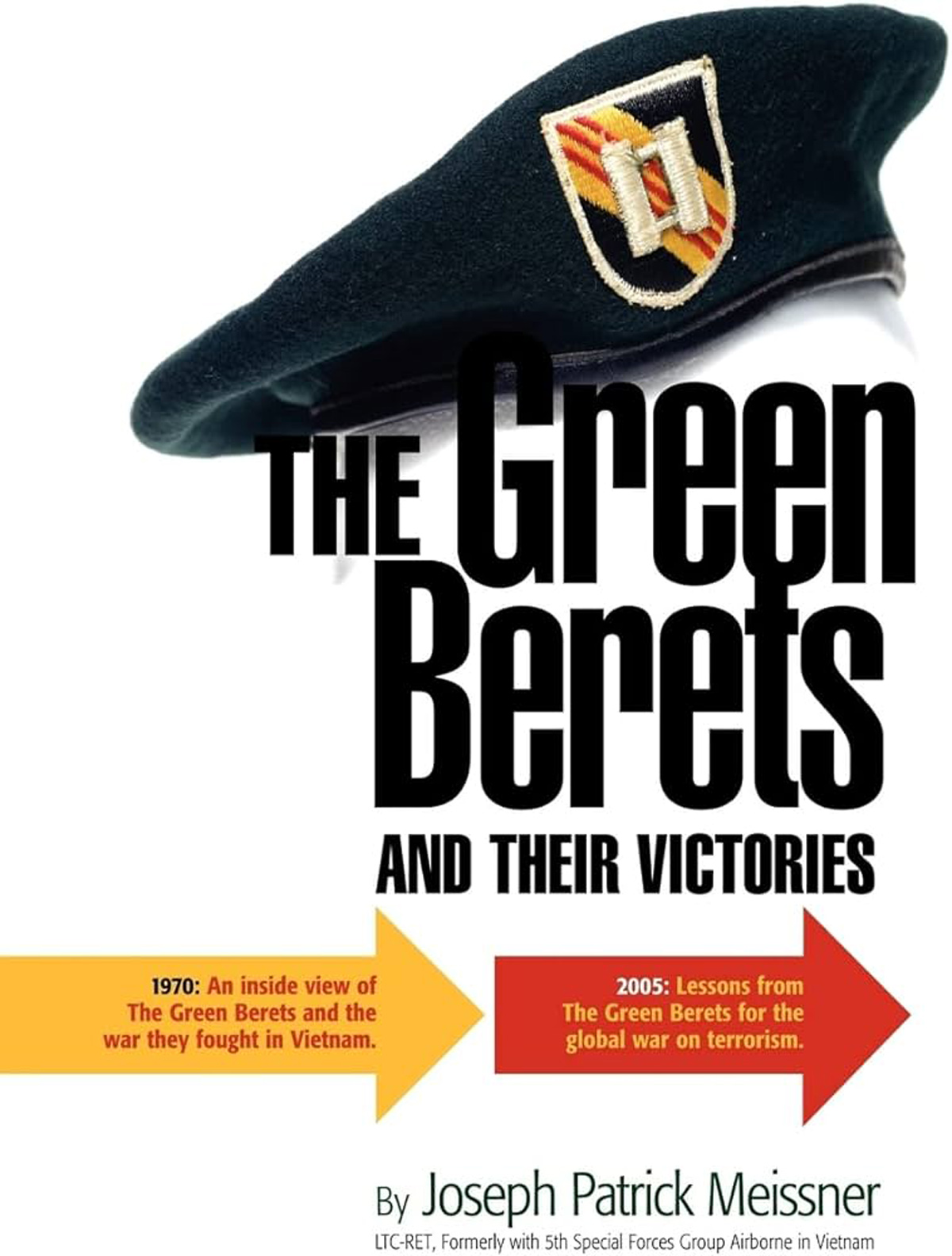Book Review
The Green Berets and Their Victories
By Joseph Patrick Meissner
Authorhouse
(November 21, 2005)
536 pages

By How Miller
Originally written in 1970 and finally published in 2005, The Green Berets and Their Victories, by Joseph Patrick Meissner, formerly a Green Beret and a retired LTC, is an impressive work. Not only does it have riveting battlefield action, but it also looks at the situation in Vietnam and how the Green Berets handled it, especially during his time with the 5th Group from 1968 to 1969. His hope in pushing ahead and getting it published in 2005 was that the current generation of warriors in Afghanistan and Iraq, as well as those in future conflicts, would be able to learn from our past successes and failures. It is also written clearly enough for civilians to enjoy and get a deeper understanding of the Vietnam War and the Green Berets.
Building on the composition and history of SF, he tells of the 1962 Buon Enao experiment, where Green Berets taught the tenacious and resourceful Montagnards to effectively fight the Viet Cong and the NVA, so they were able to create a stable and relatively safe area where their families could once again grow and thrive. This proved to themselves and others that success was possible. They also showed that with proper training, leadership, and supplies, anyone, even the marginalized people who were looked down upon by the majority of Vietnamese, could succeed.
Joseph helps us look at the many differing viewpoints and agendas that were part of the struggle. Using his own experience working out of 5th Group Headquarters in his S-5 (Civil Affairs) position, where he traveled around most of the country and participated in many different types of activities, including missions in the delta, constantly learning from all the people he interviewed, military and civilian, about what was important to them. A significant part of his job was to interview Green Berets who were out-processing to go back home. This gave him a well-rounded picture of the situations faced by the group in their quest to have the citizens of South Vietnam build a society loyal to the central government, be able to defend their freedoms, and pursue their dreams.
He tells of significant battles and issues of all four military Corps, starting from the north in I Corps, closest to the enemy’s home base in Communist North Vietnam, ending in IV Corps, the Mekong Delta, and the battle of Nui Coto Mountain. He provides several maps to help the readers visualize the geography so they can understand the strategies of both sides.
He discusses how some areas made sufficient progress to turn over camps to the Vietnamese Special Forces, and some of them had no U.S. personnel in the camps. There were also large issues of corruption and lackadaisical pursuit of defeating the enemy, to the point where some cooperated with the enemy, keeping either side from even engaging in combat by avoiding contact.
It made sense that there would be varying degrees of cooperation in a country that had seen decades of near-constant war, and merely staying alive was far more important than politics. There was an accelerating pace of camps being turned over to the ARVN and the CIDG becoming Border Rangers, part of Nixon’s plan of Vietnamization.
A camps were not the only topic. They were backed up by a Mike Force in each corps, and there were specialized recon and interdiction units. He (appropriately in 1970) mentions SOG only briefly as the “C&C outfits with secret missions” and units like B52’s Project Delta.
He boldly explains happenings near the “Flagpole,” which was what the 5th Group’s headquarters was called. He talks about what is referred to in the field as REMF’s, Rear Echelon **s, who were there to avoid danger and have a cushy life and never went to the field. He contrasts them with the professionals who were there because that was the best place to get their job done in the center of communications and activity.
He spends a whole chapter on the various types and consequences of corruption, citing many examples from experience and interviews. It was a national, or societal, problem for Vietnam, their military, and even our troops, who had a hand in some of the action.
Then he spends another chapter on the issue of sex and how war seems to inevitably bring with it a necessity for all that energy to find fulfillment. He takes a hard look at what it usually does to a society and again gives examples.
What is impressive about this book is how he doesn’t seem to pull punches and puts the good, the bad, and the ugly all out there. There are many lessons to be gleaned from this book, some pointed out by the author, and many more to be found in one’s own examination of the wide range of facts and ideas presented. It is also evident that Special Forces is needed now, as much as ever.
Now, be sure to see part of the book about the intense Battle of Duc Lap, click here.
About the Author:
How Miller has served as the editor of Chapter 78’s Sentinel since January 2021. Read How’s Member Profile to learn more about him.

Leave A Comment